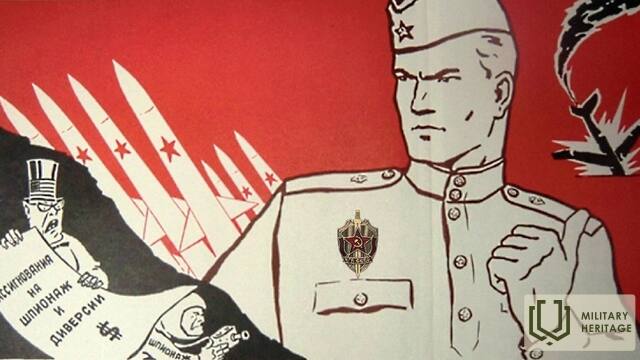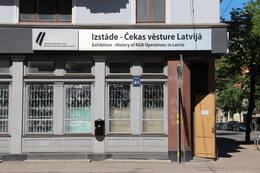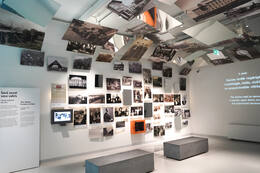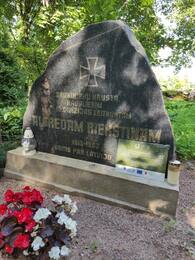Советские двойные агенты
IV Советская оккупация, III Национальное движение сопротивления, “лесные братья”
В начале пятидесятых годов все большую роль в разведывательных операциях против СССР стала играть разведывательная служба США ЦРУ, первоначально координировавшая свою деятельность с британской МИ-6. В то время англичане позиционировали себя как специалисты по деятельности на территории СССР, располагая как агентурой, так и информацией. Они также поделились с американцами общей информацией об СССР. Вся эта информация на деле оказывается дезинформацией советской контрразведки.
Следовательно, в 1951 году приоритеты в советской контрразведке изменились. До этого основным направлением противодействия было МГБ Великобритании и СССР 2. В структуре главного управления, согласно славянской азбуке, часть 2А составляла контрразведывательные операции против Англии, часть 2Б - контрразведывательные операции против США, а часть 2В — контрразведывательные операции против стран Латинской Америки.
С другой стороны, 25 декабря 1951 года произошла реорганизация, в ходе которой произошел переход от букв к цифрам. Соединенные Штаты стали главным направлением противодействия. Поэтому во 2-м Главном управлении МГБ СССР 1-я часть - контрразведывательные операции против США, 2-я часть - контрразведывательные операции против Англии, 3-я часть - контрразведывательные операции против ПВР. Такая договоренность продолжалась до распада СССР.
У разведки СССР были агенты как в британской, так и в американской разведке, которые сливали информацию в разведку СССР и работали против Запада. Они были частью гораздо более широких мер, реализуемых московским «центром», в результате которых в спецслужбы западных стран «просачивалась» специально подготовленная дезинформация. Для этих целей в начале 1950-х годов в Латвии даже было создано фальшивое подразделение лесных братьев, чтобы продемонстрировать агентам британской разведки «настоящее национальное движение сопротивления». Советской контрразведке удалось одурачить как британских, так и настоящих национальных партизан, а также главного противника - ЦРУ США, которое в то время непосредственно приступило к операциям в Латвии
Дополнительные источники информации
https://www.lsm.lv/raksts/dzive--stils/vesture/kgb-slepenie-arhivi.-spiegu-speles-latvija-cia-agenti-psrs-dienesta.a261845/
https://www.lsm.lv/raksts/dzive--stils/vesture/kgb-slepenie-arhivi.-spiegu-speles-latvija-patiesie-strikisu-raustitaji.a260177/
Связанная хронология
Связанные объекты
Выставка углового дома «История ЧК в Латвии»
Для посещения открыто бывшее здание Комитета госбезопасности СССР – «ЧК». Здесь чекисты сажали в тюрьмы, допрашивали и убивали граждан Латвии, которых оккупационный режим считал врагами. В здании размещается выставка Латвийского музея оккупации, посвященная операциям ЧК в Латвии. Тюремные камеры, коридоры, подвал и двор можно обойти вместе с гидом. Дом 1911 года постройки - один из самых красивых в Риге. Известный в народе как «Угловой дом», это самый страшный символ советского оккупационного режима в Латвии - один из столпов власти СССР. ЧК работал в «Угловом доме» во время оккупации с 1940 по 1941 год и позднее с 1945 по 1991 год.
Политические преследования напрямую затронули десятки тысяч жителей Латвии. Борьба с противниками советской власти продолжилась и после Второй мировой войны. После смерти Сталина методы работы ЧК несколько изменились. На смену физическим пыткам пришел психологический террор. Большинство агентов ЧК были латышами (52%). Русские составляли вторую по численности группу - 23,7%. 60,3% агентов не были членами Коммунистической партии. Высшее образование было у 26,9% агентов. Система была разработана для вовлечения местного населения и, таким образом, получения контроля над обществом. Списки сотрудников и служебные дела находятся в России. Они недоступны латвийским властям и исследователям.
Музей оккупации Латвии
Экспозиции музея включают историю Латвии с 1940 по 1991 год в период оккупации нацистской Германии и Советского Союза. «Дом будущего» - это проект реконструкции и расширения, а также новой экспозиции Музея оккупации известного американского латышского архитектора Гунарса Биркертса. Музей оккупации Латвии был создан в 1993 году. Он хранит долгое время скрываемый исторический рассказ о судьбе латвийского государства, его народа и земли, находившегося под контролем двух иностранных тоталитарных властей с 1940 по 1991 год. По состоянию на конец 2020 года коллекция музея насчитывала более 70 000 единиц (документы, фотографии, письменные, устные и вещественные доказательства, предметы и памятные вещи).
Эксперты музея записали более 2400 видеодоказательств, и это одна из крупнейших коллекций по теме оккупации в Европе. События, затронувшие народы Латвии, Литвы и Эстонии, являются ярким свидетельством опыта народов под властью двух тоталитарных режимов.
Связанные истории
Альфред Риекстиньш по прозвищу «Имантс» погибает в результате предательства двойного агента СССР
Альфред Риекстиньш, латышский легионер, был завербован для сотрудничества с американской разведкой ЦРУ после Второй мировой войны.









